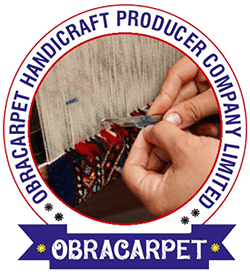The Carpet Industry in India and Aurangabad: A Legacy of Craftsmanship
India is renowned worldwide for its handmade carpet industry, a tradition deeply rooted in its cultural and artistic heritage. Aurangabad, a significant hub for carpet production, contributes to this legacy with its skilled artisans and unique weaving techniques. The city is celebrated for its hand-knotted and hand-woven carpets, which are exported globally, symbolizing quality and craftsmanship.
Tools and Raw Materials
The process of carpet making relies on specialized tools and high-quality raw materials. Key tools include:
-
Warp Frames: Essential for creating the base of hand-knotted carpets.
-
Spinning Wheels (Charkha): Used for transforming raw wool into yarn.
-
Tufting Tools: High-frequency tools for precision in tufted carpets.
-
Carding Brushes: To smooth and align wool fibers.
-
Shearing Tools: For leveling pile heights after weaving.
-
Embossing Equipment: For detailed motif creation.
The primary raw materials include:
-
Wool: wool are prized for their durability and texture.
-
Silk: Often used in premium hand-knotted carpets.
-
Natural Dyes: Eco-friendly and vibrant, including vegetable-based options.
-
Latex and Backing Materials: To provide stability and durability.
The Process of Carpet Making
Raw Material Preparation
The journey begins with carefully sourcing raw wool, which undergoes sorting to remove impurities. Tibetan wool, known for its strong fiber length and resilience, is a favorite among artisans. The wool is washed, sun-dried, and prepared for carding and spinning.
Spinning and Dyeing
Carding transforms raw wool into uniform fibers, which are spun into yarn using charkhas. Yarn thickness varies depending on the carpet’s design and quality. Dyeing, a crucial stage, involves using modern closed-chamber techniques with AZO-free dyes to ensure safety and vibrant colors. Weather conditions dictate the drying duration, which can range from one to three days.
Designing
Designing is the creative backbone of carpet making. Patterns are meticulously drawn by hand or created using Computer-Aided Design (CAD) tools. These designs, often inspired by traditional motifs or contemporary trends, serve as blueprints for production.
Weaving Techniques
-
Hand-Knotted Carpets: These carpets, crafted on warp frames using wool or silk, involve tying each knot individually. This labor-intensive method produces masterpieces of unparalleled intricacy and durability.
-
Hand-Tufted Carpets: Pre-woven fabric is stretched on a tufting loom, and yarn is inserted using high-frequency tufting tools. This method is less labor-intensive, making it suitable for quicker production.
-
Hand-Woven Carpets: Using dyed or prefinished yarns, these carpets are woven with precision. Post-weaving processes enhance their durability and appeal.
Post-Weaving Processes
-
Raw Washing: Cleans the carpet and removes dust or stains.
-
Shearing: Levels the pile height for uniformity.
-
Embossing: Adds depth to motifs by reducing pile height around designs.
-
Side Binding: Strengthens the edges with thick threads.
-
Singeing: Burns off protruding fibers for a clean finish.
-
Final Washing: Enhances luster and vibrancy.
-
Drying: Traditionally sun-dried, though modern manufacturers use controlled drying machines.
-
Clipping: Provides detailed finishing touches.
Packaging
After passing rigorous quality checks, carpets are packed and baled for export. The final product represents a blend of tradition and modernity, ready to adorn homes and spaces worldwide.
The Legacy of Aurangabad
Aurangabad’s carpet industry is a testament to India’s enduring craftsmanship. With a focus on hand-knotted and hand-woven carpets, the region combines traditional techniques with contemporary designs. Its artisans, equipped with generations of expertise, contribute significantly to India’s reputation as a global leader in handmade carpets.
From raw wool to finished masterpieces, the intricate process of carpet making in India and Aurangabad showcases a harmonious blend of tradition, innovation, and unparalleled artistry.
